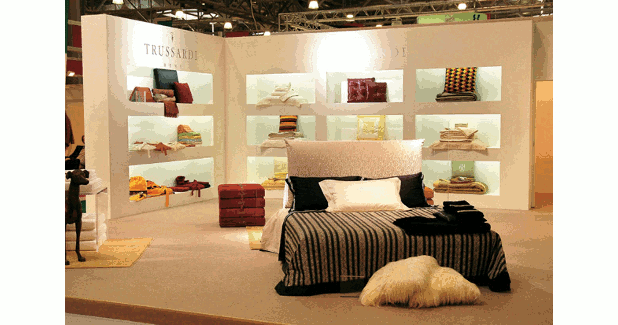
Raga Tex hints at entering new segment
Raga Tex, was launched in 1996 as a proprietorship concern by a young lady entrepreneur Thiurmagal, ably assisted by her doctor husband Dr Bharathi Muthurathinam. “It appears that many big retailers abroad, either have already done, are planning to open shop, in India. We should therefore have plans to start investing in brand building and product promotion, within Indiaâ€, says G Shekar, Executive Director, Raga Tex India Private Limited, in an interview with ITJ Senior Editor Karthik Muthuveeran.
Raga Tex, was launched in 1996 as a proprietorship concern by a young lady entrepreneur Thiurmagal, ably assisted by her doctor husband Dr Bharathi Muthurathinam. “It appears that many big retailers abroad, either have already done, are planning to open shop, in India. We should therefore have plans to start investing in brand building and product promotion, within Indiaâ€, says G Shekar, Executive Director, Raga Tex India Private Limited, in an interview with ITJ Senior Editor Karthik Muthuveeran.
Raga Tex, was launched in 1996 as a proprietorship concern by a young lady entrepreneur Thiurmagal, ably assisted by her doctor husband Dr Bharathi Muthurathinam. Later, as the concern started to grow it was converted into a private limited company, Raga Tex India Private Limited.
Currently, we are exporting only to the European markets. We are now gradually increasing our capacities and so trying to increase our market and customer base. We are also planning to participate in the Heimtextil fair in Frankfurt early next year..
It appears that many big retailers abroad, either have already done, are planning to open shop, in India. This shows that India is a growing market for home textiles and we should therefore have plans to start investing in brand building and product promotion, within India. The irony is that some of us would presently be supplying to these foreign companies who would in turn be selling our products, in India.
I was with a major home textile manufacturing and exporting company in Coimbatore, before I joined Raga Tex in 2010, as part of its core management team.
My previous company was probably a pioneer in the high end bed linen segment in South India. Before the quota system was abolished in 2005, we (my previous company) were like No. 2, I think, in India, in terms of volume, in bed linen business to the US. After the quota system was abolished, everybody started getting into the bed linen business, including big players like Alok, Welspun, etc.
It was going on well for everyone till 2008. In 2008, the whole scenario changed because of the world economy and many companies, especially the small and medium enterprises, started to face difficulties. However, Raga, riding on customer loyalty and structural changes within the organisation, has come out unscathed.
There seems to be a shift in the sourcing of home textile products within the European and American markets. New sourcing hubs like Vietnam are emerging and are probably taking away a share of the Chinese supplies. Bigger companies in India are also increasing their capacities and catering to these markets.
We actually are not facing much problem. We have our own set of fixed clients. So the loyalty exists. But once we have increased our capacities, we will try to focus on new markets. However, I find that there are a few major customers abroad who are trying to prune their vendor list and focus on volume and price reductions commensurate with present market demands. This is certainly a challenge for us.
I think the State Government in Tamil Nadu could certainly do a little better to help the industry. While quite a few states are represented in this exhibition, Tamil Nadu could also have had a fair share in promoting the State, for investment. The issues related to zero discharge and effluent treatment, coupled with acute ground water shortage in the region during the past few months have contributed to the misery of the industries here that are dependent on such dyers and processors for their dyeing and printing needs. The Government can attempt to find a permanent solution for such issues without compromising on environmental sustainability. I think that with constant infrastructure upgrades by major manufacturers in other states, their raw material sourcing needs from Tamil Nadu seem to be dwindling.
The rumor doing the rounds is that a lot of companies are shifting focus from Tamil Nadu and are eyeing other States for investment and growth. I don’t know whether it is true or not. If it’s true, then the Tamil Nadu Government must address this.
We are not vertically integrated, but we are planning to be one. First of all, we are looking to expand our existing capacities, and then venture into new segments like dyeing and printing.



